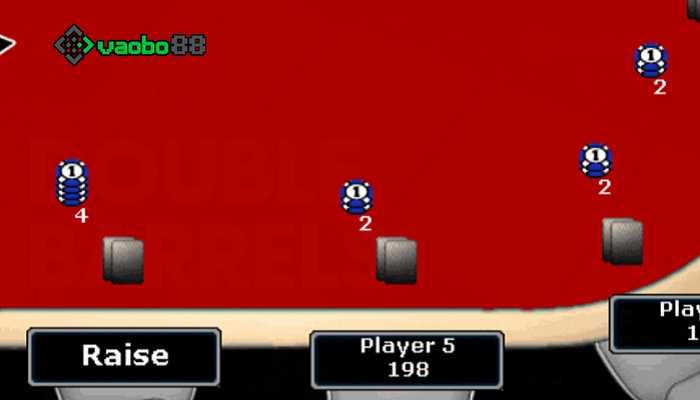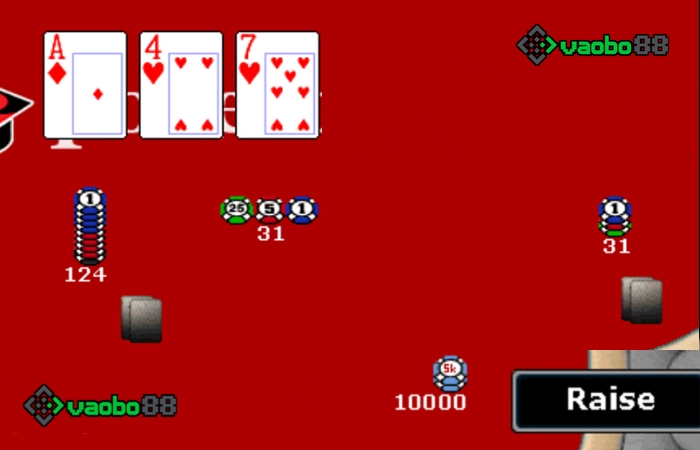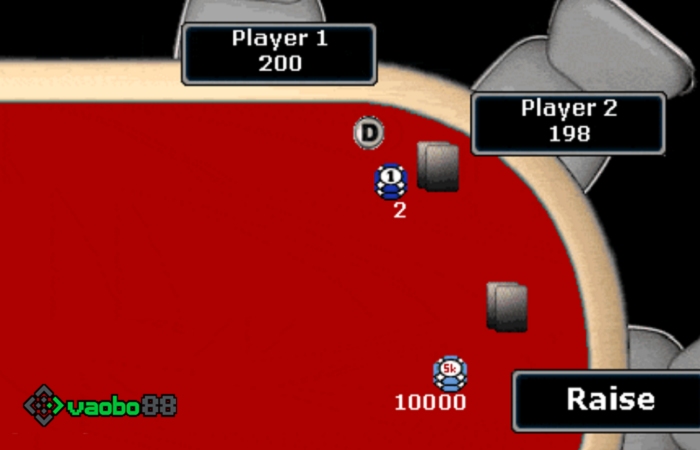After learning about the types of Poker players, Vaobo88 continues to share about the types of bets in Poker
This is just basic knowledge, but not every player fully understands the rules or takes the time to learn about them.
So, have you ever wondered why one table allows any bet amount, but another table has limits?
If you know the types of bets, this will certainly not be difficult for you and will also serve as a foundation to support your path to professional competition.
What are the types of bets in Poker?
The types of bets in Poker are the ways to put money into the common POT according to the rules of each table.
In other words, the types of bets are a Poker term that refers to the betting rules at each table.
Don’t think that you just need to Call or Raise higher than the previous player; Raising depends on each player’s strategy, but how much to Raise is determined by the table’s rules.
In Texas Poker, if you play online, it’s quite easy because there will be a tool that indicates the amount to Raise. However, at a real table, you have to calculate how much to Raise on your own.
Specific types of bets in Poker
There are three types of bets in reputable reward-based Poker games tables, including: Fixed Limit / Pot Limit / No Limit.
Before learning about each specific type, players need to understand the following concepts:
- When you enter a table and see symbols like 2$/4$ or 1$/2$, 4$/8$…: These are the minimum and maximum bet limits of the table.
- POT: This is the total prize money accumulated up to the current point.
#1 Fixed Limit Bet Type
Fixed Limit is a bet type with limits according to the table’s minimum and maximum bets. This means there is a limit on the amount a player is allowed to Raise in each round.
Specifically, in the first two rounds, Preflop and Flop, you are only allowed to Raise up to the minimum bet, and in the next two rounds, Turn and River, you are allowed to Raise up to the maximum bet.
Note that you absolutely should not Raise beyond this maximum bet.

Example: A Fixed Limit table is marked as 4$/8$. If you are the player sitting to the left of the Big Blind, in the Under the Gun (UTG) position, and the Small Blind has already bet 4$, the Big Blind raises to 8$. When it’s your turn:
=> If in the Preflop or Flop round, you have three options:
- Fold: This means you don’t follow, losing the small blind of 4$.
- Call: Add another 4$ to match the Big Blind.
- Raise: If you want to raise, you can only add the minimum amount of 4$ => The total amount put into the POT will be 8$.
- If the player after you wants to Raise further, they can only add a maximum of 4$ => Adding to the POT 12$.
=> If in the Turn and River rounds, you will have three options:
- Fold: Fold your hand.
- Call – Follow: Match the previous player’s bet.
- Raise: In these two rounds, Raise must be the exact max bet, no more, no less.
Example: The Big Blind has Raised from $4 to $12, you can either call $12 (add $8 more) or Raise an additional $8, meaning you put $16 into the common POT, no more, no less.
#2 Pot Limit Betting
In this betting format, the amount you bet does not depend on the minimum or maximum bet but depends on the POT of the table at the time you place your bet.
For example, the $4/$8 figure does not determine the Raise amount, it only indicates the SB and BB, and we have the formula:
The maximum amount you are allowed to Raise = POT + (2 x call amount)

Example: You are still in the UTG position, Small Blind has put in $4, Big Blind Raises an additional $4 to make it $8 => The common POT now has $12.
At that point, you can only:
- Fold your hand.
- Call – Follow the Big Blind, so you must match the Big Blind with an additional $4.
- Raise must be $20. The reason for $20 is that the first two positions have put in $4 + $8 = $12, if you call, you must add $4 to make it $16. If you Raise, you must Raise exactly this amount, meaning an additional $16 => So: $4 + $16 = $20.
=> If you place a bet, the formula will be: Amount = 12 + (4×2) = $20.
This betting style also requires either following or Raising according to the current POT, not exceeding the amount according to the above formula.
However, you are allowed to Raise at least the same amount as the previous Raise, meaning in the above example, you can call $4 and Raise an additional $4 = $8.
#3 No Limit Betting
No Limit means no limit, and it is easy to notice the All-in button on the table.
Players are allowed to go all-in, meaning they can bet all the money they have on the table into the common POT.
In this style of play, players are allowed to:
- Choose to Call by matching the previous player’s bet.
- Raise from the Big Blind up to the maximum of your entire stack.

If you are sitting after someone who has gone All-in, you must choose to Call or Fold, you cannot Call with a lesser amount, and there is no limit to the number of betting rounds that can be All-in.
You can also go All-in right in the Preflop round, and if you are sitting right after the Big Blind, you are allowed to go All-in on your first action.
Which Poker Betting Style Suits You?
The betting styles also greatly influence the player’s decisions and strategies, so consider the following scenarios:
a) Scenario 1:
If you are a tight player, meaning a Tight style, then Fixed Limit is the perfect choice.
This is also the table that should be reserved for beginners who are just getting familiar with Poker. If you choose the other two styles, you will easily feel overwhelmed and psychologically affected by the betting amounts.
b) Case 2:
If you are a player who is open-minded but rational, Pot Limit is the most reasonable choice.
In general, people who choose this style of play are also very unpredictable, quite tight with finances but have a certain level of risk-taking, and often make wise decisions, so be cautious when facing them.
c) Case 3:
If someone specializes in psychological play/Bluffing or plays many hands in a loose manner, then No Limit will be their choice.
If you sit at this table, your mindset must be very strong.
If you can follow through to the end, you are very likely to be the winner, but don’t foolishly compare finances or play a reverse strategy because they often invest without knowing what it means to be frugal.
See more advanced Poker betting techniques:
Conclusion
Above are the basic types of bets in Poker that you should know, especially when you are determined to go down the professional path.
Because each choice reflects what type of player your opponent is, the knowledge in this article is also a factor that can help you win.








